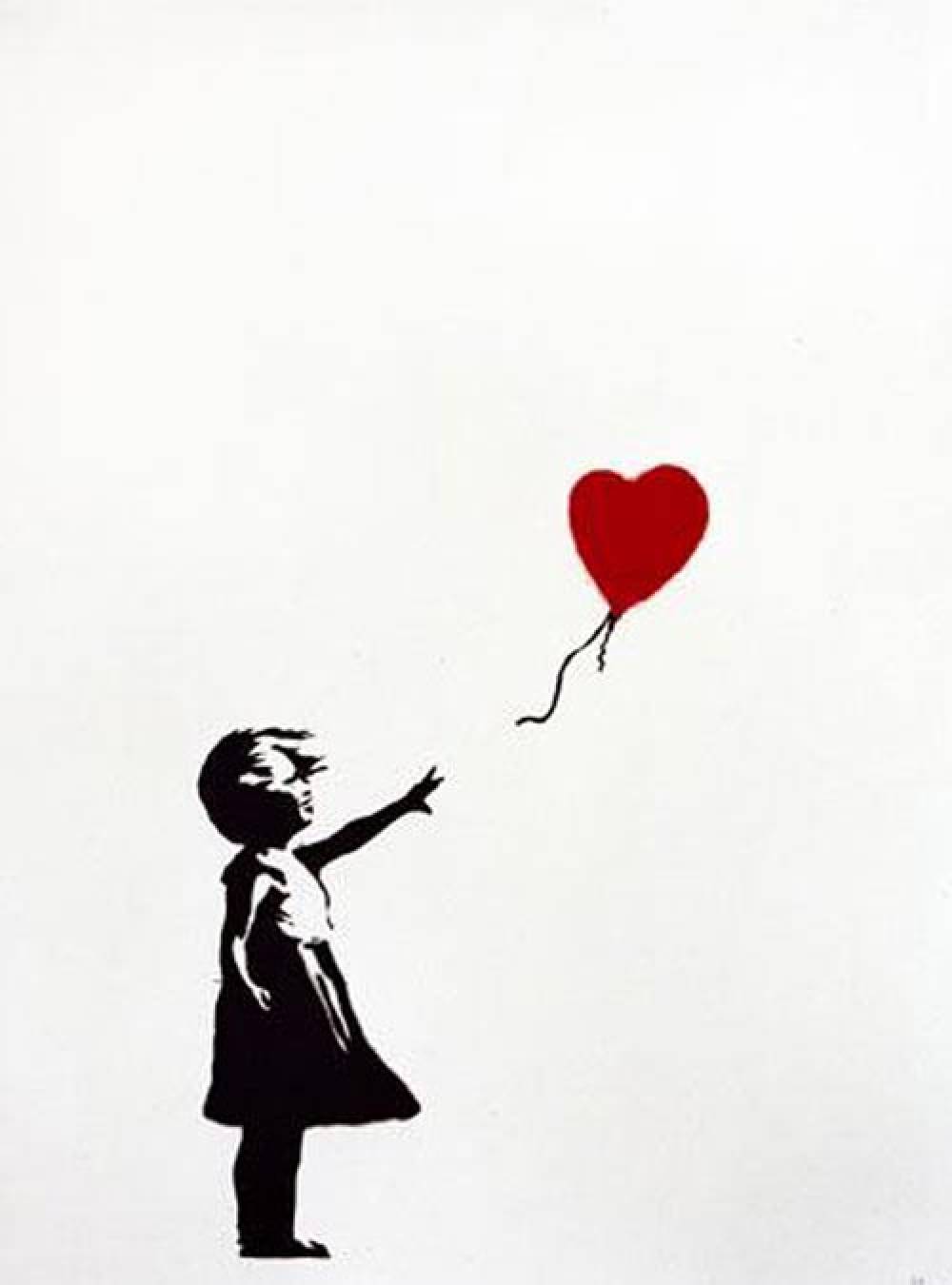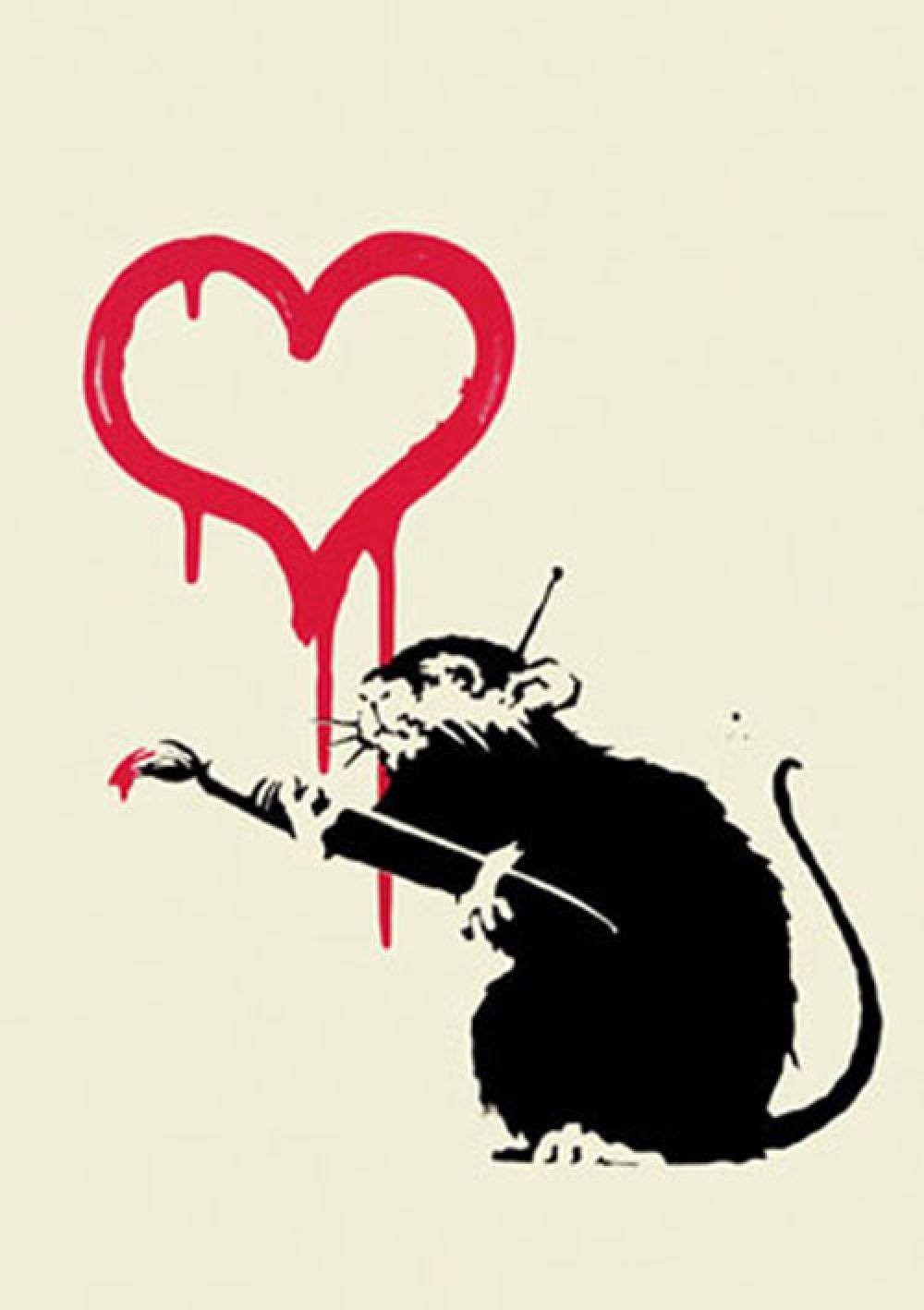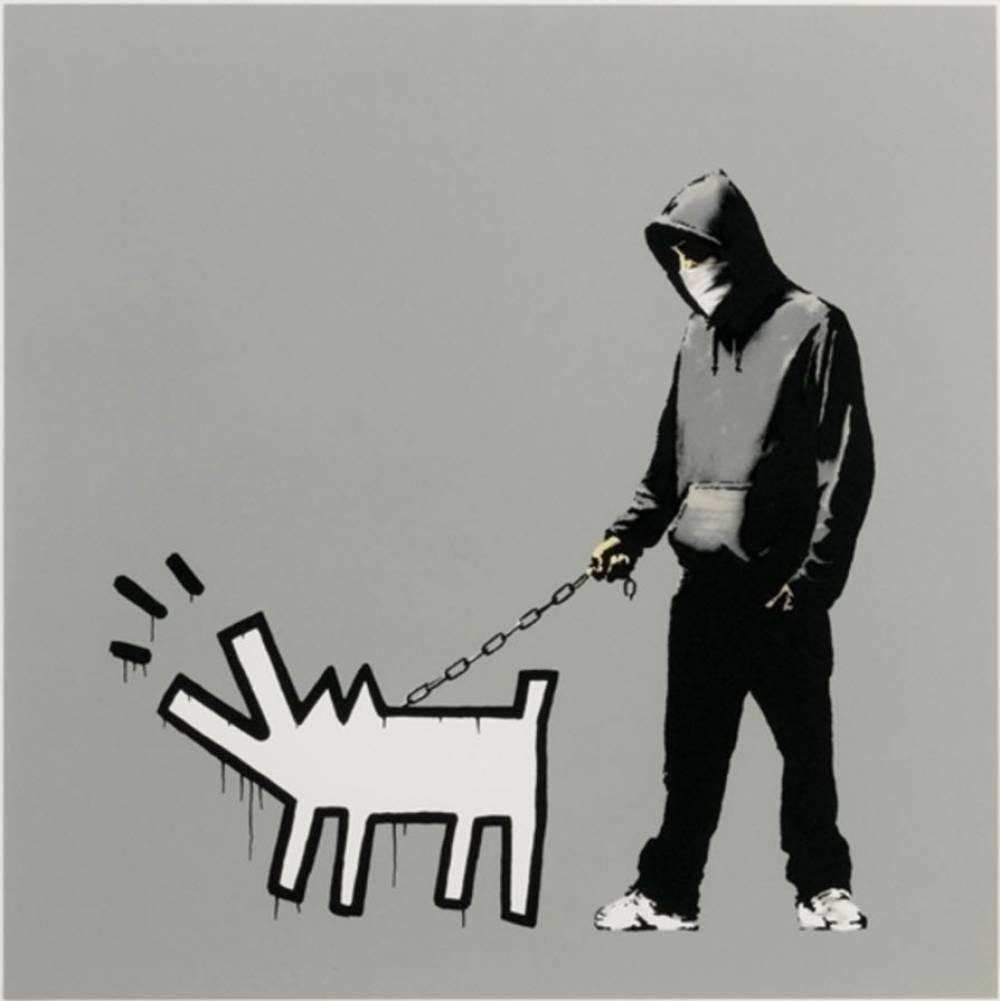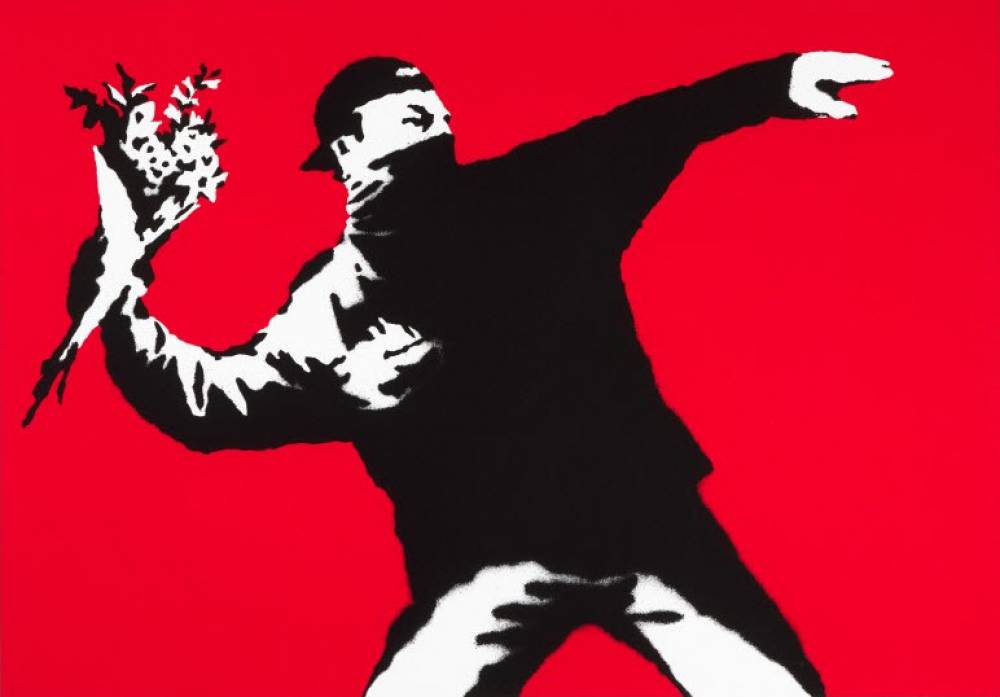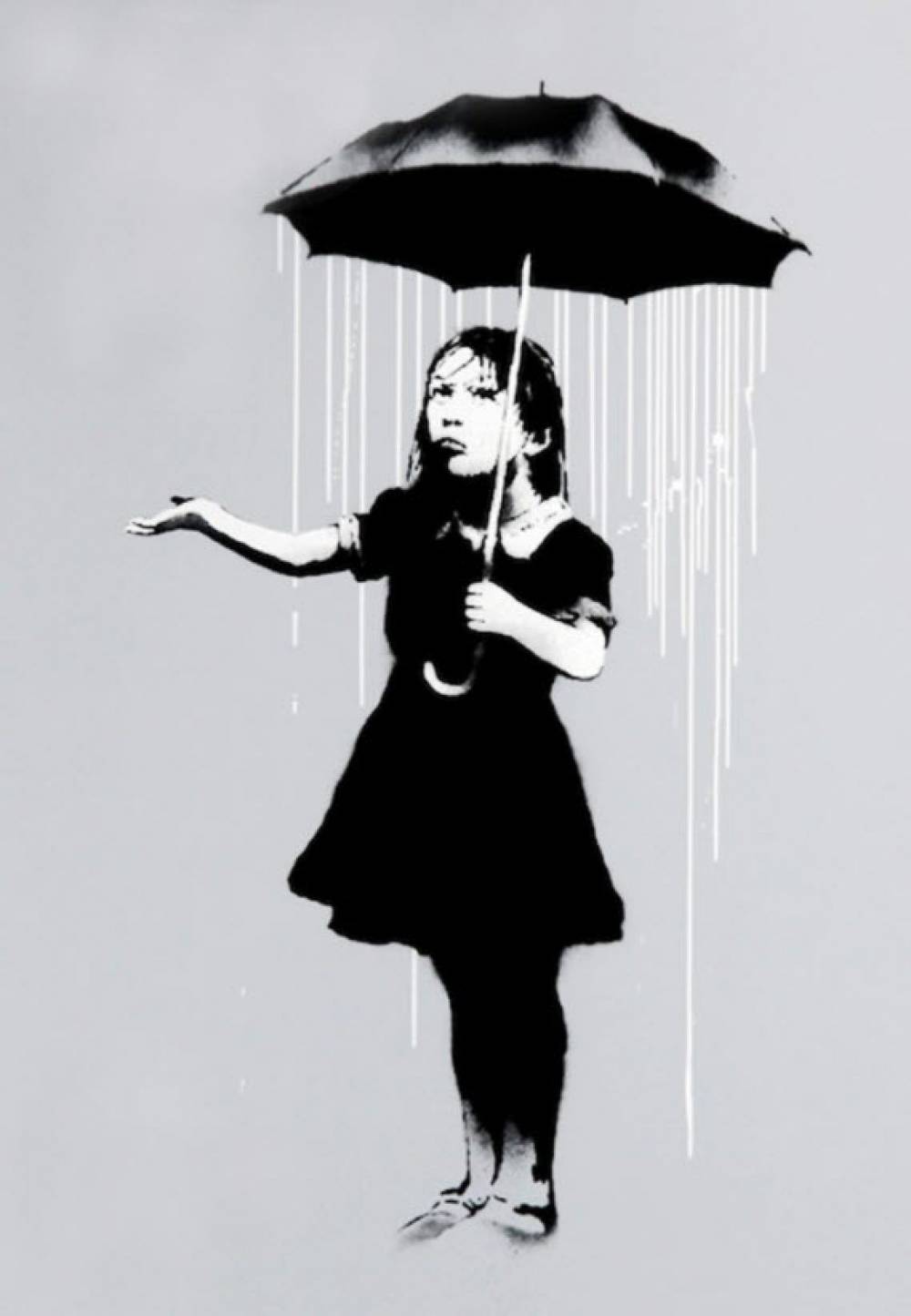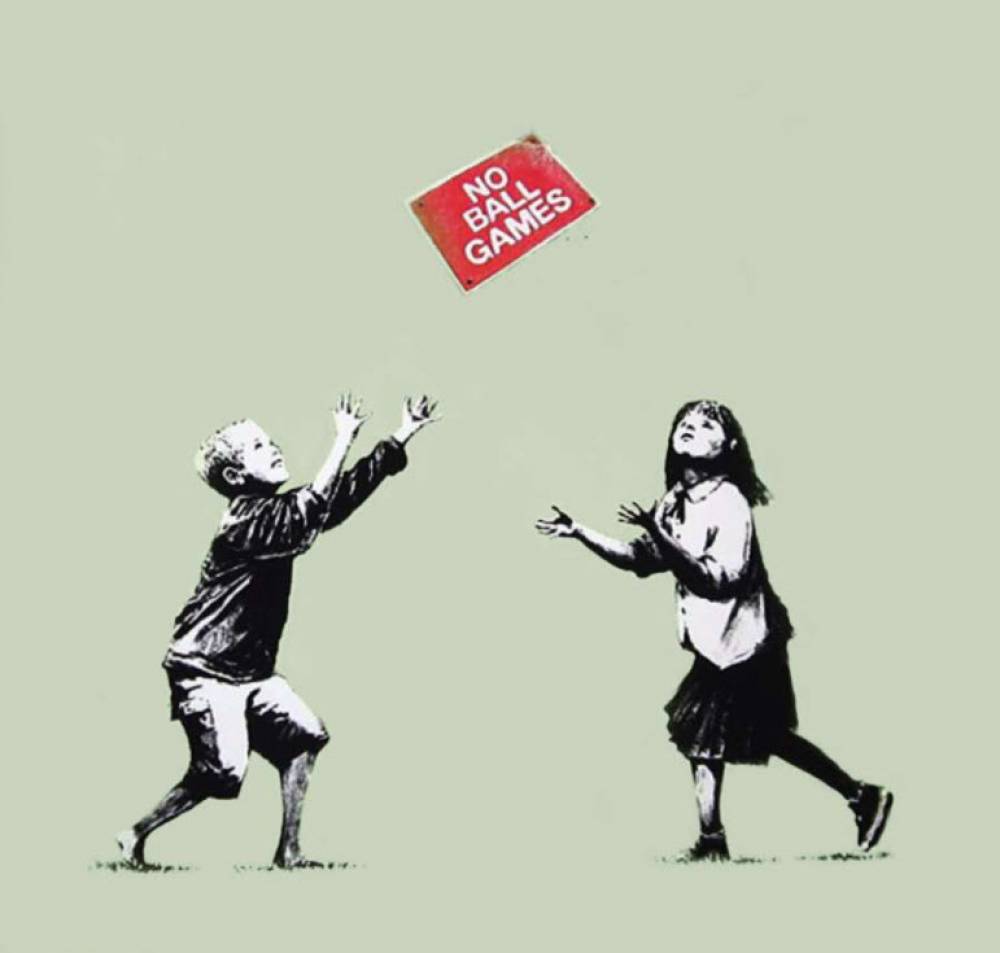
Banksy No Ball Games
The first thing you may want to know about No Ball Games is that it is a work which has evolved and gone through many reincarnations over the years. The manifestation of this piece on the streets and its release as a print are later developments. The first public appearance came in Banksy’s LA Barely Legal show in 2006. This appearance on canvas features a television with the image of a ball on it, being tossed around instead of the now famous “No Ball Games” sign that this work is now recognized by.
Another variation of the work on canvas, still featuring a television with an image of a clearly identifiable basketball on it, made an appearance in Dreweatts’s Urban Art in 2009. Finally, it was in the 2009 Banksy vs. Bristol show that we see the work starting to resemble the print that was later released. It then appeared on Tottenham High Road in London, and Turnpike Road from where it was removed by an organization that goes by the name of the Sincura Group. The Turnpike Road piece was auctioned off in 2013 as part of the Stealing Banksy exhibition. The certifiable prints were released in 2009 in two colours and through two sources. POW released 250 prints in person (people had to actually queue all night) and then an online lottery was used to release the other 250 prints.
What does No Ball Games mean?
If you are familiar with the work and fan of the essays, in particular of the incredibly prolific English Philosopher and Mathematician, Bertrand Russell, you will not be able to resist a chuckle and give an instant nod to this work. There is a sentence in a chapter titled ‘Nice People’, in Russell’s controversial-at-the-time book, “Why I am not a Christian”, which runs something to the effect of: Nice people are the ones who will donate thousands to build a playground and then make so many rules that no child could possibly ever enjoy it. Russell’s whole chapter is satirical. However, the sentence seems to have been an early precursor to No Ball Games. The bright green of the print’s background and the almost kitschy sketching of the happy children stand in stark contrast to the dark and critical nature of the theme that Banksy upholds in this work. This also shows us that there is strong satire at play here. Banksy is talking about the dehumanization that childhood has undergone because of urbanization and modernity.
What are your thoughts?
There is a deeper and more basic meaning behind this work too perhaps; and definitely, a more cheerful one. The essential energy of childhood, the vitality, the joy, the curiosity and that healthy disregard for authority cannot be destroyed despite the modern obsession with regulation. The children are playing with a sign that says they must not engage in play, which involves hurling an object around. Life will and does find a way and is inherently superior to the inhumanity of systems and authority.
Specialists in Banksy prints and urban art, Contemporary Art Trader can help you find your very own, authentic No Ball Games, signed or unsigned. For any queries you may have, contact us today.




